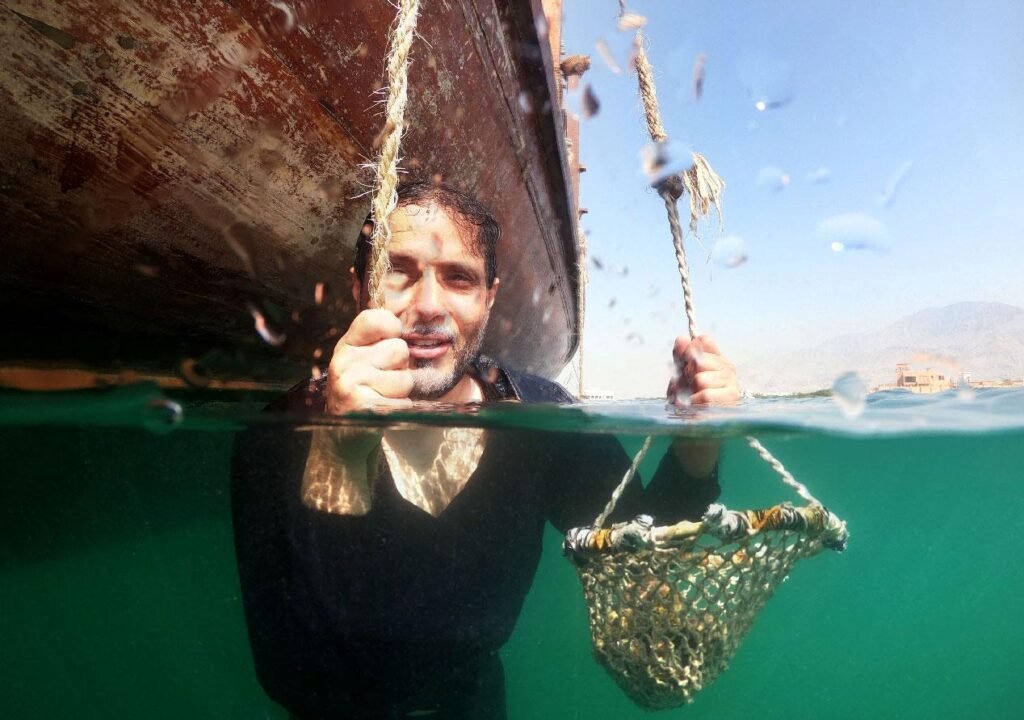Long before oil transformed the UAE into a glittering hub of skyscrapers and supercars, the country’s lifeblood came from the sea. Pearl diving, once the backbone of the economy, was a way of life—hard, dangerous, but filled with pride and purpose. Today, as the memory of that era fades from everyday life, descendants of the nation’s pearl divers are working to keep their legacy alive, not in sorrow but in celebration.
Through personal stories, family traditions, and creative reinterpretations, this cultural revival is helping young Emiratis reconnect with their roots and giving the world a glimpse into a powerful piece of the UAE’s identity.
The Sea Still Speaks
Mohammed Al Suwaidi walks barefoot along the shores of Ras Al Khaimah, his eyes scanning the waves that once sustained his family. His grandfather, a renowned diver, used to tell him tales of the months he spent at sea—diving with nothing but a nose clip, finger guards, and the strength of his lungs.

“My grandfather didn’t see himself as poor,” Mohammed says, “he saw himself as a provider. The sea was dangerous, yes, but it also offered a kind of freedom.”
Though Mohammed never took up pearl diving, he has made it his mission to pass the stories on. As a schoolteacher, he integrates heritage lessons into his curriculum, using real artifacts and oral histories to show his students that the past is more than just old photographs. He also leads weekend visits to traditional diving villages with youth groups, where young Emiratis can experience firsthand what life was like aboard a dhow.
“For many of them, it’s the first time they realize the sea holds more than leisure,” he says. “It holds their story.”
The Art of Remembering
In Umm Al Quwain, 29-year-old Fatima Al Nuaimi has transformed her family’s heritage into wearable art. Her grandfather was a pearl diver, and her father a dhow builder. Growing up, her home was filled with relics—nose clips, oyster knives, and the soft cotton bags divers used to collect their treasures.
“I didn’t understand their value at first,” she admits. “But as I grew older, I realized these objects weren’t just tools. They were symbols of strength.”
Fatima now creates jewelry inspired by traditional diving equipment. Each design incorporates shapes and textures from the tools once used on the boats, and every piece tells a story—of risk, reward, and resilience.
She also hosts workshops in local schools and cultural centers, introducing students to the techniques behind both jewelry-making and the historical tools she draws inspiration from. “It’s not just about preserving history,” she says, “it’s about reimagining it for today.”
Songs of the Sea
In Ajman, 75-year-old Saeed Al Hammadi spends his afternoons aboard a restored dhow docked in the old harbor. His hands, weathered by time, move confidently over the deck as he recounts his childhood at sea.
He was only six when he joined his father on his first diving trip. “I remember the chanting of the Nahham—the singer whose voice kept our spirits alive during the hardest days. The ocean was wide, the work was brutal, but the songs made us feel human.”

Now, Saeed volunteers as a cultural guide, telling stories to visitors and schoolchildren. He demonstrates how divers would prepare, how they communicated using rope signals, and how brotherhood was essential to survival.
“The sea taught us to depend on one another,” he says. “It taught us to listen—not just to the waves, but to each other.”
A Family’s Voice on Film
Dubai-based filmmaker Layla Bin Hareb is working on a documentary that dives deep into the lives of families descended from pearl divers. Her own lineage traces back to Abu Dhabi’s coastal traders, and Friday family lunches were often filled with stories of lost pearls, stormy nights, and long voyages.
“My father never dove, but he knew every detail,” she says. “Those stories helped shape how I saw the world—not as something to conquer, but something to understand.”
Her documentary blends old photographs, interviews with elders, and dramatic re-enactments filmed in actual coastal towns. It aims to create an emotional connection with viewers who might otherwise see pearl diving as something distant and abstract.
“What I want to show is the soul of the culture—the quiet strength, the poetry of the sea, the pride that still lives on,” she says.
Culture That Breathes
Throughout the Emirates, cultural tourism centered on maritime heritage is growing. In Fujairah and Abu Dhabi, heritage villages and diving museums now offer immersive experiences—everything from traditional sea shanties to net-weaving demonstrations.
28-year-old Khalid Al Marri is among a new wave of cultural ambassadors. His great-grandfather was a pearl merchant who once traded across the Gulf. Today, Khalid guides visitors through recreated dive camps and leads virtual reality tours of old diving routes.
“When I tell guests about our past, I’m not just a guide,” he explains. “I’m a bridge between worlds.”
His passion for storytelling has even led him to develop a mobile app where users can interact with holographic divers, listen to Nahham songs, and learn the signals used during dives. “We’re taking something old,” he says, “and giving it a new voice.”
The Spirit of Resilience
One common thread among the descendants is a sense of quiet strength. Pearl diving was no romantic adventure—it was grueling work with little reward and great danger. But it built a culture that prized endurance, humility, and connection.
For many families, this spirit still shapes how they approach life. It informs how they raise their children, how they treat their elders, and how they build their communities.
“You can’t understand the UAE without understanding the sea,” Mohammed says. “It gave us more than pearls. It gave us character.”
The Tide Carries On
Though the last commercial pearl dives may have taken place decades ago, their impact endures. In classrooms, studios, museums, and homes, the stories continue to flow—told by people who feel the weight of their legacy and wear it with pride.
These are not just stories of hardship—they are stories of humanity, of a people who lived in harmony with nature and each other, navigating life with little more than courage and hope.
Today, their descendants carry that same courage into a new era, one where glass towers may replace wooden boats, but where the heartbeat of the nation still echoes with the rhythm of the sea.
The pearl may be small, but its story is immense—and it still shines, quietly, from the hands of those who remember.
Read More: Discover Marsa Mina: A New Vibrant Destination in UAE













